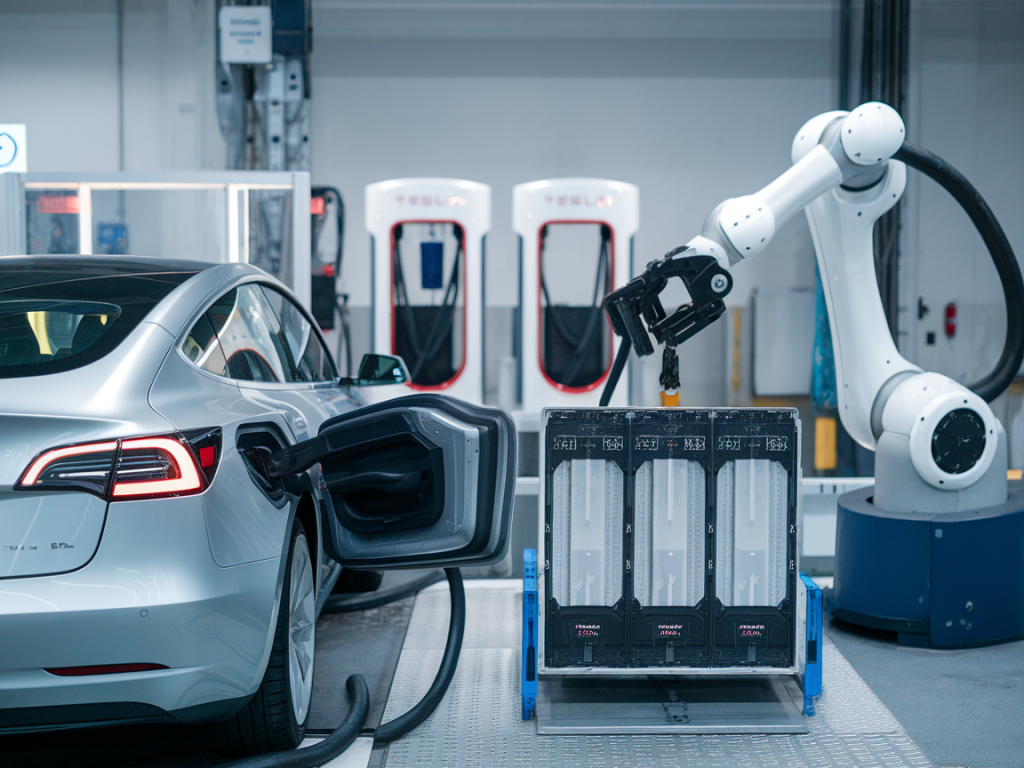
In recent years, electric vehicles (EVs) have taken center stage in the quest for a greener, more sustainable transportation future. Yet, despite the surge in demand and innovation, one persistent obstacle continues to challenge widespread EV adoption: charging infrastructure. Long charging times and a lack of accessible chargers are significant barriers for drivers considering the switch from traditional internal combustion engine vehicles. Enter battery swapping stations—an innovative solution that's rapidly gaining traction and reshaping how we think about powering EVs.
What Are Battery Swapping Stations?
Battery swapping stations are facilities where electric vehicle owners can quickly exchange their depleted battery for a fully charged one. The process typically takes just a few minutes, making it comparable to refueling a gasoline car. Unlike traditional charging methods that tie a vehicle to a charging point for anywhere between 30 minutes to several hours, swapping provides an almost instant energy alternative, eliminating range anxiety for EV drivers.
This solution isn't entirely new. The concept was first explored over a decade ago, with companies such as Better Place attempting to implement swapping networks. However, early challenges—like high infrastructure costs and a lack of standardization—hindered its success. Today, advancements in technology and increasing demand for EVs have revived and refined the vision for battery swapping, positioning it as a game-changer in the green innovation space.
How Does Battery Swapping Work?
The process is surprisingly straightforward. Here’s a step-by-step breakdown:
- When an EV driver reaches a swapping station, they position their vehicle over a designated platform.
- A robotic system then removes the depleted battery from the vehicle using automated machinery.
- The robot replaces the old battery with a fully charged one, ensuring compatibility with the vehicle's specifications.
- The entire process takes between 3 to 10 minutes, depending on the station's technology and setup.
Some battery swapping networks operate on a subscription or membership model, which allows drivers to pay for battery use based on the energy they consume, rather than owning the battery outright. This can also help reduce the upfront costs of purchasing an EV (since the battery is often the most expensive component).
Who's Leading the Charge?
Battery swapping is no longer a niche experiment. Several forward-thinking companies and countries are making significant investments to bring this technology into the mainstream:
- NIO: The Chinese EV manufacturer has pioneered battery swapping technology with its sophisticated "Power Swap" stations. NIO currently operates hundreds of swapping stations across China and even allows drivers the flexibility to choose different battery sizes depending on their needs.
- Gogoro: In the realm of electric scooters, Gogoro is revolutionizing urban transport with its battery swapping network. Particularly popular in Taiwan, Gogoro's swap stations cater to millions of riders daily.
- Amara Raja: In India, companies like Amara Raja are experimenting with battery swapping as a solution for electric two-wheelers and rickshaws, aiming to solve the challenges posed by urban congestion and air pollution.
Governments are also playing a critical role. For instance, China has introduced standards to promote battery swapping infrastructure development, while organizations in Europe and India are considering similar regulatory frameworks to accelerate adoption.
Why Is Battery Swapping Gaining Momentum?
So, what’s driving this renewed interest in battery swapping? Here are some of the key advantages:
- Speed: Charging times are one of the biggest pain points for EV owners. A traditional fast charger still takes at least 30 minutes to provide a significant charge, while a battery swap can be completed in under 10 minutes.
- Convenience: With a widespread network of swapping stations, drivers don’t need to meticulously plan their routes around charging points or wait in line for a charger to become available.
- Cost Savings: For fleet operators or commercial applications (like ride-hailing and logistics), swapping can reduce operational downtime, translating into significant savings.
- Battery Longevity: Swapping facilities can manage batteries more effectively, ensuring they’re charged under optimal conditions, which helps preserve battery health over time.
- Sustainability: Centralized battery management allows recycling and repurposing efforts to be streamlined, reducing e-waste and enhancing the circular economy of EV batteries.
These benefits make battery swapping particularly attractive in densely populated urban areas, where quick energy solutions and space-efficient infrastructure are crucial.
Challenges and Considerations
Despite its promise, battery swapping isn't without challenges. One of the most pressing issues is standardization. Unlike fueling a gasoline vehicle where a single nozzle fits all, EV batteries differ widely in size, shape, and specifications. Establishing industry-wide standards will be critical to enabling interoperability between different manufacturers and platforms.
Another hurdle is infrastructure cost. Building and maintaining battery swapping stations requires substantial investment, especially considering the high-tech robotics and inventory of fully charged batteries necessary for smooth operation.
Finally, there’s the question of consumer trust. Drivers accustomed to owning their vehicle’s battery may hesitate to adopt a swapping model where ownership is replaced with shared usage. Overcoming this mindset will likely require greater education and campaigns showcasing the practical advantages of swapping.
The Road Ahead
Battery swapping, while still emerging, is a powerful example of how green innovation can address the critical barriers slowing EV adoption. As more automakers, technology startups, and governments collaborate to overcome the challenges, swapping stations are poised to become an integral part of the EV ecosystem.
It’s an exciting time to witness this transformative shift, and I believe battery swapping has the potential to redefine how we think about energy in the transport sector. What’s even more impressive is the scalability of this solution—not just for cars but for bikes, scooters, and even heavy-duty trucks. In the fast-changing world of mobility, this could be one of the defining technologies that brings electric power to every corner of the globe.

